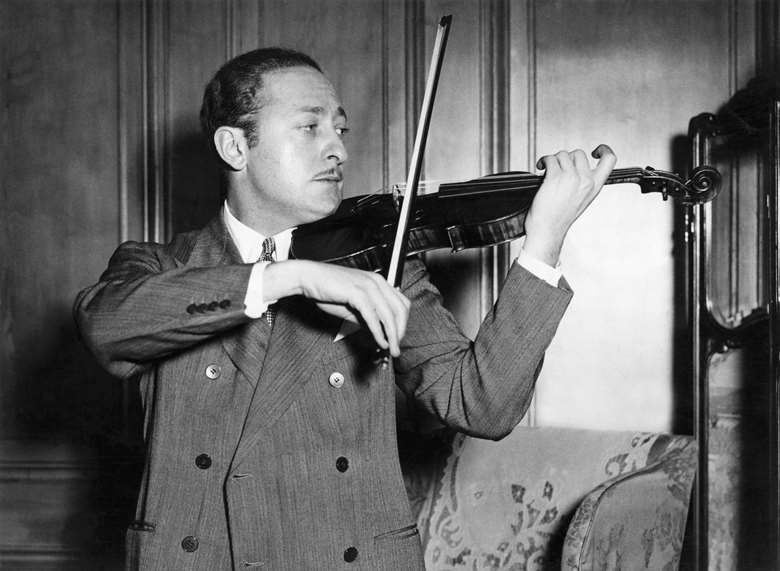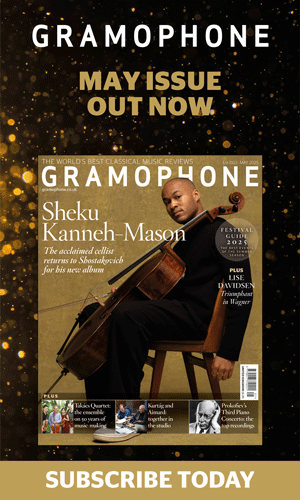Jascha Heifetz - (Obituary Gramophone March 1988) by Bryan Crimp
Gramophone
Thursday, January 1, 2015
‘There are many violinists – then there is Heifetz.’ David Oistrakh’s now celebrated aphorism revealed the universal reverence felt towards Jascha Heifetz by the world’s string players. Heifetz was, indeed, the nonpareil of violinists.

‘There are many violinists – then there is Heifetz.’ David Oistrakh’s now celebrated aphorism revealed the universal reverence felt towards Jascha Heifetz by the world’s string players. Heifetz was, indeed, the nonpareil of violinists.
Along with Fritz Kreisler, Heifetz was the most innovative and influential violinist of our century – it was surely not coincidence that both men shared the same birth date, February 2nd, or that they both died shortly before their 87th birthday. Heifetz was born in Vilna, the ancient capital and seat of learning of Lithuania, and it was apparent from a very early age that he possessed a stupendous musical talent, a heaven-sent gift that became manifestly evident when the six-year-old infant played the Mendelssohn Concerto in public on a half-size violin. Heifetz was subsequently taken to St Petersburg, the cradle of Russian violin playing, where after a short spell of study with Ioannes Nalbandyan, he became the protégé of the great Leopold Auer and, coincidentally, the youngest pupil at the Imperial Conservatoire. Of all Auer’s celebrated pupils, and they included Efrem Zimbalist, Mischa Elman, Toscha Seidel and Eddy Brown, only Heifetz had that rare and magical ‘inner glow’.
In April 1911, Heifetz made his first public appearance in St Petersburg and was soon making the occasional foray into Europe. The rumours of a super-prodigy were found to be entirely accurate when Heifetz appeared in Berlin during the following year. A short while later Heifetz was invited to attend a specially convened ‘summit meeting’ of violinists then to be found in Europe; Juan Manen, Bronislav Huberman, Carl Flesch, Willy Hess, Jan Kubelik and Fritz Kreisler were among the gathering as Heifetz played the Mendelssohn Concerto before the incredulous assembly (to Kreisler’s masterly piano accompaniment, played from memory). It was during this period that Kreisler made his celebrated pronouncement, ‘Well gentlemen, we might as well break our violins across our knees!’
In 1917, the Heifetz family fled Russia and after a dangerous journey via Siberia and Yokohama arrived in San Francisco. Just weeks later, on 27 October, the 16-year-old Heifetz stepped on to the stage of New York’s Carnegie Hall for the first time. The audience was bulging with musicians; certainly every violinist within a radius of some 200 miles was present, not least Mischa Elman, who declared as he wiped the sweat from his brow, ‘It’s warm in here tonight!’, to which the pianist Leopold Godowsky quietly observed, ‘Only for violinists!’. Heifetz’s international career had begun. The occasion raised serious implications; Kreisler apart, Heifetz had effectively relegated his contemporaries and the majority of his seniors. Furthermore, the way into the profession for succeeding generations became doubly difficult.
It comes as no surprise to find that Heifetz entered the recording studio within a fortnight of this never-to-be forgotten debut, he began in front of the acoustic horn and some 40 years later started to record much of the mainstream repertoire in stereo. His last ‘session’ was a live recording (issued by CBS) of his farewell recital in 1972. It is a vast discography, much of it mirroring the peaks of his concert career and one that reflects subtle changes of emphasis; the early titles radiate an awesome, high tensioned brilliance, while Heifetz appears to have been at his most relaxed and lyrical during the 1930s – as the recent EMI reissue on LP of the majority of his recorded collaborations with Barbirolli so graphically illustrates. The RCA stereo recordings find Heifetz at his most intense and glowing and their continued release on CD is building up a stunning three-dimensional sound-picture of Heifetz at his peak.
Heifetz’s mastery of a capricious instrument was total and absolute. His tone was unique and instantly recognizable (always a guide to true greatness in string playing!), at once virile, embracing a vast tonal palette and of a laser-like focus and intensity even at its most hushed and ethereal. The sensuous, lyrical beauty of his phrasing was the envy of musicians from all walks of life. If Heifetz’s left hand was capable of feats of dexterity the likes of which have rarely been equalled, his exceptionally fluid bowing arm was possibly the finest ever known. Several great violins passed through his hands, not least the ‘Dolphin’ Stradivarius of 1741 and Kreisler’s violin, but it was his ‘David’ Guarnerius del Gesu of 1742 which he favoured for almost all concert and recording work. His favourite bow was a Kittel given to him by Auer.
During his adult years Heifetz was a fanatical seeker after musical truth which was allied to a punishing regime of self-discipline. He would re-study works that he had played for decades. Such a relentless striving for perfection inevitably took its toll of his personal life and his demanding standards made him a prickly and, on occasions, unsympathetic teacher.
On the public platform there was no posturing, no agonizing; Heifetz stood as if rooted, fiddle held high, his face a sphinx-like, expressionless mask. It was an approach which bemused some critics who considered that such an imperturbable despatch of the music could only result in a cold and calculating interpretation. These critics were obviously doubly handicapped; had they ears to hear they would have recognized for themselves one of the great hallmarks of Heifetz’s playing, an overwhelming emotional involvement and dramatic commitment. Heifetz was only remote when it came to the inquisitive public gaze. In the 1970s he filed a £7.5 million ‘invasion of privacy’ suit against the publisher of an unauthorized biography (with its obsessive interest in his earning capacity and its malicious photo captions, small wonder!) while the few interviews he granted gave little away; his practice routine was his ‘trade secret’ and he steadfastly refused to talk of his past. It seems, however, that he did give permission for an authorized biography to be published after his death.
Heifetz’s controversial choice of tempos was undoubtedly influenced by his immense technical fluency. Though swifter than the norm, such was the elegance and musicality of his playing that only rarely did his interpretations appear over-driven. If the Mendelssohn Concerto was perhaps a casualty, such tempos imbued the Beethoven Concerto with a seraphic, radiant contentment and his unaccompanied Bach with a rock-like invincibility. But even his harshest critics could not fault Heifetz in the Romantic repertoire; the Brahms, Glazunov, Sibelius, Wieniawski Second, Vieuxtemps Fourth and Fifth Concertos and, perhaps his piece de resistance, Bruch’s Scottish Fantasy. His recordings of all these works are of definitive status.
Heifetz’s repertoire included all the standard classics and an extensive armoury of show-stopping virtuoso pieces. He did much to expand the repertoire via an array of highly effective transcriptions (said to number some 150) as well as commissioning many large-scale works, mostly from composers who wrote in a direct and melodic manner. It is, for example, significant that he was among the first champions of Prokofiev’s Second Concerto yet avoided the same composer’s more angular First Concerto as well as the works of Bartok, Berg and Stravinsky – nor did he play the Schoenberg Concerto despite having commissioned it. Sadly, the majority of Heifetz’s commissions are best forgotten; the vacuous posturings of Louis Gruenberg’s Concerto, the insipid Second Concerto of Castelnuovo-Tedesco and the Hollywood glitter of Erich Korngold and Miklos Rozsa. William Walton’s Concerto is the solitary, noble exception. It is doubtful if any other international soloist lavished so much time and energy on chamber music, be it as a member of the much-publicized ‘Million Dollar Trio’, when Heifetz was paired with Artur Rubinstein and Gregor Piatigorsky, or those happier and more musically rewarding ventures which began in 1961, The Heifetz-Piatigorsky Concerts.
Throughout an adult international career of half a century, Jascha Heifetz was always at his peak, never allowing fluctuations of mood or external influences to disturb the poise and meticulous balance of his playing. It was Heifetz who raised the standard of violin playing to new, undreamt-of heights. He was the first and greatest of a new breed, the all-round virtuoso; bravura technician, ardent lyricist and uncommon stylist. For once a record company’s blurb approached the truth when RCA dubbed Heifetz ‘The Violinist of the Century’.
Back to Jascha Heifetz / Back to Hall of Fame







